
Glasgow Royal Concert Hall is a major concert and arts venue, in the city of Glasgow, Scotland. It is owned by Glasgow City Council and operated by Glasgow Life, an agency of Glasgow City Council, which also runs Glasgow's City Halls and Old Fruitmarket venue.
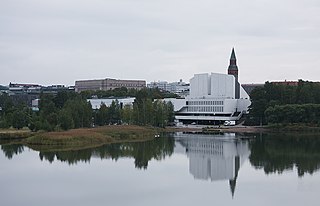
The Finlandia Hall is a congress and event venue in the centre of Helsinki on the Töölönlahti Bay, owned by the City of Helsinki. The building, which was designed by architect Alvar Aalto, was completed in 1971. Every detail in the building is designed by Aalto. The designs were completed in 1962, with building taking place between 1967 and 1971. The Congress Wing was designed in 1970 and built in 1973–1975. In 2011, the building was expanded with new exhibition and meeting facilities. Finlandia Hall is known as the venue for the OSCE Summit held in August 1975, attended by 35 world leaders, including the leader of the Soviet Union, Leonid Brezhnev, and the President of the United States, Gerald Ford.

The Istana Budaya or also known as the Palace of Culture, is Malaysia's main venue for all types of theatre including musical theatre, operetta, classical concerts and opera from local and international performances. It is located in heart of Kuala Lumpur city, next to the National Art Gallery.
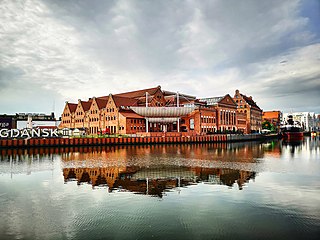
Polish Baltic F. Chopin Philharmonic in Gdańsk is a concert hall located in Ołowianka, Gdańsk.

The Queensland Cultural Centre is a heritage-listed cultural centre at Grey Street, South Brisbane, City of Brisbane, Queensland, Australia. It is part of the South Bank precinct on the Brisbane River. It was built from 1976.

St David's Hall is a performing arts and conference venue in the heart of Cardiff, Wales.

The Capitol is an historic theatre on Swanston Street in the central business district (CBD) of Melbourne, Victoria, Australia. Opened in 1924 as part of the Capitol House building, the art deco theatre was designed by American husband and wife architects Walter Burley and Marion Mahony Griffin, and is the oldest of Melbourne's large picture palaces. It is famous for its extravagant decor and abstract motifs, including an intricate geometric ceiling containing thousands of coloured lamps, designed to evoke the walls of a crystalline cave.

His Majesty's Theatre is an Edwardian Baroque theatre in Perth, Western Australia. Constructed from 1902 to 1904 during a period of great growth for the town, the theatre is located on the corner of Hay Street and King Street in Perth's central business district.
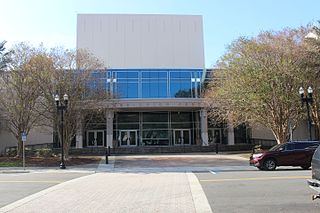
The Times-Union Center for the Performing Arts (TUCPA) is a performing arts center located in Jacksonville, Florida. Situated along the Riverbank, the venue is known as the First Coast’s "premiere riverfront entertainment facility". Originally opening in 1962, the facility was renovated beginning in 1995 until 1997; with a grand re-opening on February 8, 1997. The center consists of three venues: a theatre; concert hall and recital hall. It is home to the Jacksonville Symphony, Jacksonville Symphony Youth Orchestra, and the FSCJ Artist Series.

Adelaide Festival Centre, Australia's first multi-purpose arts centre and the home of South Australia's performing arts, was built in the 1970s, designed by Hassell Architects. The Festival Theatre opened in June 1973 with the rest of the centre following soon afterwards. The complex includes Festival Theatre, Dunstan Playhouse, Space Theatre and several gallery and function spaces. Located approximately 50 metres (160 ft) north of the corner of North Terrace and King William Road, lying near the banks of the River Torrens and adjacent to Elder Park, it is distinguished by its two white geometric dome roofs, and lies on a 45-degree angle to the city's grid.
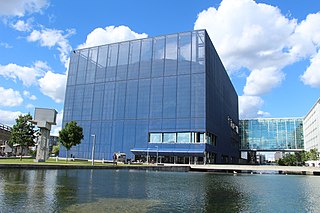
DR Koncerthuset by Jean Nouvel is a part of the new DR Byen, that houses the Danish Broadcasting Corporation, DR. The concert hall and the DR Town are located in the northern part of Ørestad – an ambitious development area in Copenhagen, Denmark.
Jeffrey Howlett (1928–2005) was a Western Australian modernist architect. Howlett was born in India, but later traveled to London for his studies and then moved to Perth, Australia for training to become an architect. Throughout his life, he won various competitions with his partner Donald Bailey. Howlett acknowledged the reality of late-twentieth-century cities and, through his architecture, suggested a way of making sense of the disorder. He was a founding partner of Howlett and Bailey Architects, along with Bailey, which designed a number of Australian landmarks such as Council House and the Perth Concert Hall.

Council House is a 13-storey office building on St Georges Terrace in Perth, Western Australia. Located beside Stirling Gardens and Government House in the city's central business district, the 49.8-metre (163 ft) building was designed by Howlett and Bailey Architects and opened by The Queen in 1963, after Perth hosted the 1962 British Empire and Commonwealth Games. For most of its history, it has served as the headquarters for the City of Perth.

The Auditorio Nacional de Música is a complex of concert venues located in Madrid, Spain and the main concert hall in the Madrid metropolitan area. It comprises two main concert rooms: a symphonic hall and a chamber music hall.

The Helsinki Music Centre is a concert hall and a music center in Töölönlahti, Helsinki. The building is home to Sibelius Academy and two symphony orchestras, the Finnish Radio Symphony Orchestra and the Helsinki Philharmonic Orchestra.

The Barbican Centre is a performing arts centre in the Barbican Estate of the City of London and the largest of its kind in Europe. The centre hosts classical and contemporary music concerts, theatre performances, film screenings and art exhibitions. It also houses a library, three restaurants, and a conservatory. The Barbican Centre is a member of the Global Cultural Districts Network.

Perth Concert Hall is a space that houses a programme of concerts, performances and contemporary art in Perth, Scotland. It is a successor to Perth City Hall and like sister venue Perth Theatre is leased to Horsecross Arts Limited by Perth & Kinross Council. The building was opened by Her Majesty Elizabeth II in 2005.
Howlett and Bailey Architects was founded by Jeffrey Howlett and Donald Bailey in 1960, in Perth, Western Australia. They received numerous design awards and commendations from the Royal Australian Institute of Architects and won the competition for the Reserve Bank of Australia Building in Canberra in 1962. Their designs combined Modern style and Classical rationale, which resulted in ordered and axial aspects. Howlett and Baileys Architects’s major projects included the Public Suite, the Beatty Park Pool kiosk and Manager’s house, and the two Australian landmarks the Council House (1962) and the Perth Concert Hall (1973). Howlett and Bailey Architects merged with Cox Architects in 1995 to create Cox Howlett & Bailey Architects. In 1998 the company merged with Forbes & Fitzhardinge Woodland to form Cox Howlett & Bailey Woodland Architects, which still practices today.
Donald Bailey, also known as Don Bailey, is an Australian architect, and executive director of the RAIA in Canberra after his own private practice. In 1960 Donald Bailey setup Howlett and Bailey Architects with Jeffrey Howlett in Perth, Western Australia. Other than having won the competition for Perth Town hall, they went on and built up a reputation by winning a couple of successful practice in Perth including Perth concert hall. Their firm were also involved in other projects such as the already demolished Manager's House, the Public Suite, the Beatty Park Pool kiosk.
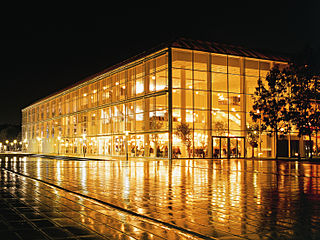
Musikhuset Aarhus is a large concert hall complex in Aarhus, Denmark. Located in the city centre, Musikhuset is Aarhus' main venue for music and with seating for more than 3,600 people in total, it is the largest concert hall in Scandinavia. Musikhuset Aarhus was designed by Kjær & Richter and built in 1979-1982, commissioned by Aarhus Municipality.



























